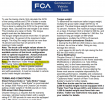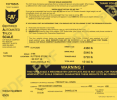HAL9001
Well-Known Member
- Joined
- Nov 10, 2020
- Messages
- 336
- Reaction score
- 672
- Points
- 93
I recently purchased a 2021 RAM 1500 Limited. I only have an 1156 lb Payload rating (as per the door sticker) to work with. So, each pound means a lot when it comes to selecting a Travel Trailer. On the trailer I want, I calculate I'll be around 90 lbs over my payload limit after I add all passengers and cargo, due primarily to the trailer's dry tongue weight. And this is with removing as much cargo as I practically can from both the truck and the trailer.
Now, on this forum and others, it's been argued both ways that the Payload limit RAM provides either does or does not include an 150 lb allowance for the driver. I have no idea who is correct, but since it means the difference in buying or not buying the trailer I want, I did a deep search into any official information I could find directly from FCA concerning this.
I found this document on the RAM website titled Towing Basics, so you would think that would be on-topic and accurate. This document states the following (note the highlighted fields):

So, unless I'm missing something, and please tell me if I am, it appears that RAM is allowing an 150 lbs driver weight for both the Trailer Weight and the Payload.
If this is wrong, please tell me exactly why, but please be certain as it will greatly affect the trailer I and others in the same situation can purchase.
Now, on this forum and others, it's been argued both ways that the Payload limit RAM provides either does or does not include an 150 lb allowance for the driver. I have no idea who is correct, but since it means the difference in buying or not buying the trailer I want, I did a deep search into any official information I could find directly from FCA concerning this.
I found this document on the RAM website titled Towing Basics, so you would think that would be on-topic and accurate. This document states the following (note the highlighted fields):

So, unless I'm missing something, and please tell me if I am, it appears that RAM is allowing an 150 lbs driver weight for both the Trailer Weight and the Payload.
If this is wrong, please tell me exactly why, but please be certain as it will greatly affect the trailer I and others in the same situation can purchase.













